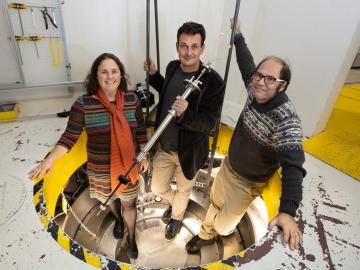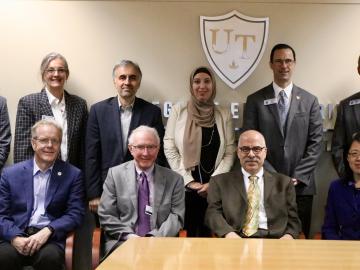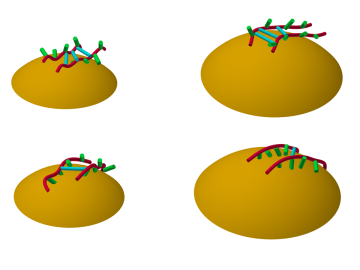
Filter News
Area of Research
- Advanced Manufacturing (3)
- Biology and Environment (15)
- Energy Science (14)
- Fusion and Fission (4)
- Fusion Energy (2)
- Isotope Development and Production (1)
- Isotopes (8)
- Materials (35)
- Materials Characterization (1)
- Materials Under Extremes (1)
- Neutron Science (6)
- Nuclear Science and Technology (1)
- Supercomputing (21)
- Transportation Systems (1)
News Topics
- (-) Composites (8)
- (-) Exascale Computing (18)
- (-) Isotopes (12)
- (-) Materials Science (38)
- (-) Polymers (6)
- 3-D Printing/Advanced Manufacturing (37)
- Advanced Reactors (10)
- Artificial Intelligence (38)
- Big Data (17)
- Bioenergy (32)
- Biology (29)
- Biomedical (12)
- Biotechnology (7)
- Buildings (14)
- Chemical Sciences (24)
- Clean Water (10)
- Computer Science (60)
- Coronavirus (4)
- Critical Materials (10)
- Cybersecurity (14)
- Education (3)
- Emergency (1)
- Energy Storage (29)
- Environment (65)
- Fossil Energy (2)
- Frontier (21)
- Fusion (15)
- Grid (21)
- High-Performance Computing (33)
- Hydropower (3)
- Irradiation (2)
- Machine Learning (20)
- Materials (59)
- Mathematics (2)
- Mercury (5)
- Microelectronics (2)
- Microscopy (12)
- Molten Salt (2)
- Nanotechnology (13)
- National Security (21)
- Neutron Science (53)
- Nuclear Energy (41)
- Partnerships (24)
- Physics (20)
- Quantum Computing (12)
- Quantum Science (19)
- Security (5)
- Simulation (29)
- Software (1)
- Space Exploration (10)
- Summit (18)
- Transportation (30)
Media Contacts

Researchers at Oak Ridge National Laboratory demonstrated that an additively manufactured polymer layer, when applied to carbon fiber reinforced plastic, or CFRP, can serve as an effective protector against aircraft lightning strikes.

Scientists at the U.S. Department of Energy’s Brookhaven National Laboratory have new experimental evidence and a predictive theory that solves a long-standing materials science mystery: why certain crystalline materials shrink when heated.

ORNL and The University of Toledo have entered into a memorandum of understanding for collaborative research.

Quanex Building Products has signed a non-exclusive agreement to license a method to produce insulating material from ORNL. The low-cost material can be used as an additive to increase thermal insulation performance and improve energy efficiency when applied to a variety of building products.

Researchers at Oak Ridge National Laboratory proved that a certain class of ionic liquids, when mixed with commercially available oils, can make gears run more efficiently with less noise and better durability.

A team including Oak Ridge National Laboratory and University of Tennessee researchers demonstrated a novel 3D printing approach called Z-pinning that can increase the material’s strength and toughness by more than three and a half times compared to conventional additive manufacturing processes.

Using additive manufacturing, scientists experimenting with tungsten at Oak Ridge National Laboratory hope to unlock new potential of the high-performance heat-transferring material used to protect components from the plasma inside a fusion reactor. Fusion requires hydrogen isotopes to reach millions of degrees.

A new method developed at Oak Ridge National Laboratory improves the energy efficiency of a desalination process known as solar-thermal evaporation.

Oak Ridge National Laboratory has teamed with Cornell College and the University of Tennessee to study ways to repurpose waste soft drinks for carbon capture that could help cut carbon dioxide emissions.

A team of researchers at Oak Ridge National Laboratory have demonstrated that designed synthetic polymers can serve as a high-performance binding material for next-generation lithium-ion batteries.


